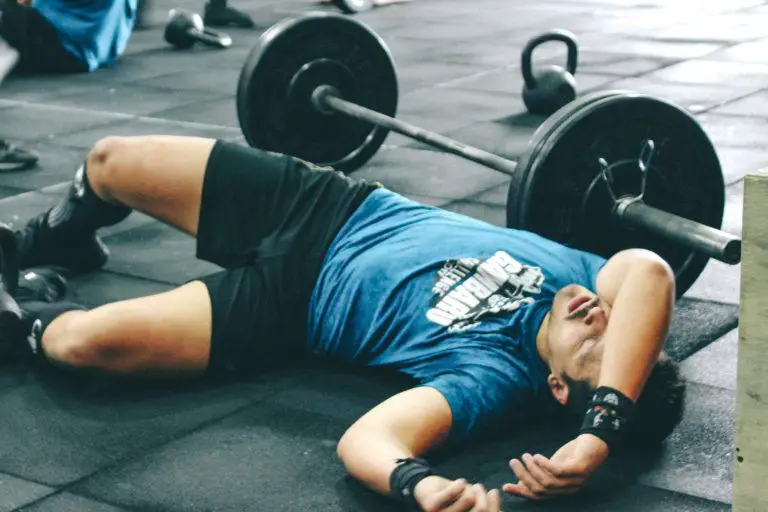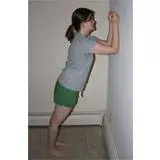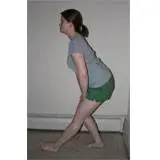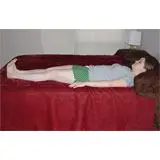
Cramps happen when normal muscle function goes horribly, agonizingly wrong. Endurance athletes are familiar with them and so are most women (for those kind of cramps, read: how to get rid of menstrual cramps). And if you’re one of the many people who suffer from nocturnal muscle cramps, you must really hate them, waking you up in the middle of the night like in sharp angry pain. Worse is when your jaw cramps up! Just walking it off isn’t enough…read the following for more info on how to help prevent and thus get rid of cramps.
Muscle cramps occur when a muscle suddenly contracts, hard, without being willed to do so. The result is pain, and it can be so extreme as to render the affected muscle—usually a leg muscle—temporarily useless. Cramps have few symptoms aside from the pain (which is usually enough on its own), but the spasming muscle will often protrude in a hard lump under the skin that can be felt or sometimes even seen. Most cramps subside on their own within 15 minutes, but often leave behind some longer-lasting soreness. Luckily, cramps and the pain associated with them usually respond well to at-home treatments, and you can prevent future muscle cramps by following a few relatively simple steps.
Causes of Cramps
Cramps are a bit of a medical mystery, in the sense that doctors and scientists have so far been unable to prove exactly what causes muscles to suddenly seize up. The following list is therefore brought to you by anecdotal evidence, the observation of individual patients and how they respond to treatment, and, frankly, a lot of educated guesses.
- Overuse of muscles, especially during hot weather
- Dehydration
- Depletion of minerals (especially potassium, calcium, and magnesium)
- Pregnancy
- Remaining in the same position for a long time
- Using the same muscles repetitively
- Certain disorders, including diabetes, rheumatoid arthritis, thyroid disease, and some circulatory problems (These cramps should be treated by treating the disorder. Botox injections may help prevent cramps associated with some muscle disorders.)
- Certain medications, including some used to treat high blood pressure, reduce cholesterol, and control asthma (If you suspect that your cramps are being caused by one of your prescriptions, talk to your doctor about alternative treatments.)
Best Ways of Preventing Cramps
Stay fit to prevent both exercise cramps and night cramps.
A toned muscle that’s accustomed to vigorous activity may be less likely to cramp during exercise than a weak muscle—though, of course, other factors besides muscle weakness often cause cramps, even in the most physically fit among us. Poor circulation is one possible cause of foot and leg cramps, especially those that strike pregnant women or strike at night, and regular aerobic exercise may improve the circulation of blood and oxygen to your extremities by strengthening your heart and lungs. That’s good for overall health, obviously. So, if you want to get started, you can check out any number of Amazon videos (some even free with an Amazon Prime membership).
Stay hydrated.
Whether you’re engaging in physical activity or not, it’s never a bad idea to drink plenty of water. Exercise-induced cramps are more likely to occur in hot weather, when athletes sweat heavily and can easily become dehydrated; cramps are just one reason to replace lost fluids by drinking water before, during, and after vigorous activity—regardless of the outdoor temperature. Even for non-athletes, improper hydration is a possible cause of the charlie horse. If you get these nighttime leg cramps, it may help to drink the recommended 64 ounces of water a day and limit your consumption of diuretics such as coffee, tea, and alcoholic beverages.
Stretching can help prevent cramps by making muscles more elastic and relaxed.
A regular stretching regimen, such as yoga, may help ward off leg cramps at night, especially if you do the stretches shortly before going to bed. Of course, stretching both before and after exercise is always recommended, not only to prevent cramps, but also to avoid injuring your muscles. Doing a warm-up and a cool-down when you exercise can also help to prevent muscle cramps by easing your muscles in and out of the most strenuous part of your workout.
Replacing depleted minerals and electrolytes seems to be a crucial step in preventing all types of muscle cramps.
Sufficient levels of calcium, magnesium, and potassium are particularly important for ensuring proper muscle function. All three of these are available in sports drinks and dietary supplements, but because both magnesium and potassium can be dangerous in excessive doses, it may be better to get these minerals primarily from food sources. Potassium occurs naturally in lots of foods—including meat, fish, tomatoes, potatoes, bananas, apricots, nuts, and milk—while magnesium is found in spinach, beans, peas, and whole grains.
Ergonomics can be helpful in preventing cramps caused by light but repetitive activities.
Writer’s cramp (or typer’s cramp, presumably the modern equivalent) is one common example; another is muscle stiffness related to staying in the same position over an extended period of time. Even if your job isn’t physically strenuous, it may be hard on your body; a supportive chair and a good pen, mouse pad, wrist guard, or brace can go a long way toward making your everyday working life a lot less painful.
How to Stop Cramps
Muscle cramps almost always quit on their own. But that doesn’t mean you have to let them do it in their own time. When a muscle cramp strikes, there are a few things you can do to shorten the duration of the pain. And since muscle cramps can recur, often several times in a row, you may want to use one or more of these techniques after a cramp; it could relax the muscle enough to prevent it from locking up again.
- If you can stand to do it, stretching during a cramp can cut the muscle spasm short by helping to relax the affected muscle.
- Gently massaging the tightened muscle can release it from the contraction. Massage can also be helpful in relieving pain after a cramp.
- Applying heat or cold can relax cramped muscles and ease the pain associated with them. You may want to experiment to find the method that works best for you, but generally speaking, using a hot pack (such as a heating pad or a warm, damp towel) or soaking in a hot bath will help to relax tight muscles. An ice pack will be more effective at reducing pain and inflammation, especially in the day or so after a cramp subsides. We’d recommend a hot/cold pack like the TheraPearl sold on Amazon.
Stretches to Relieve Cramps
Walking stretches the leg muscles gently, and a little stroll may be enough to loosen some cramps. If that doesn’t work, try one of the following stretches. To avoid injury, practice these stretches first, at a time when you aren’t experiencing a muscle cramp.

To ease a calf cramp, stand a couple feet from a wall and lean on the wall with your forearms, keeping your legs straight and your heels on the floor.

If the cramp is in a hamstring on the back of your thigh, stand with the knee of your pain-free leg slightly bent. Pressing your inner thighs together, straighten the cramped leg in front of you with your heel on the floor and your toes in the air. Lean forward a little.

For relief of a charley horse or any other nighttime leg or foot cramp, lie on your back in bed and, with your legs straight, flex both ankles to point your toes toward your head.